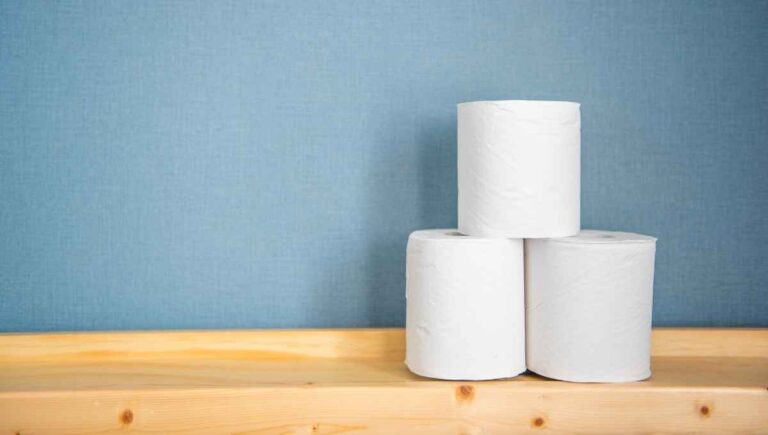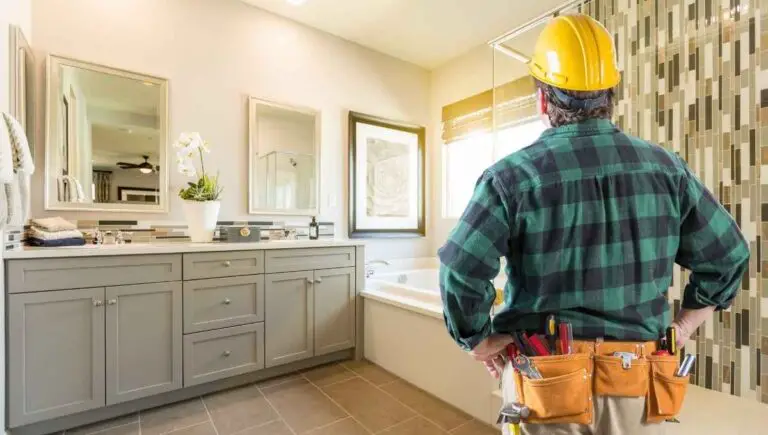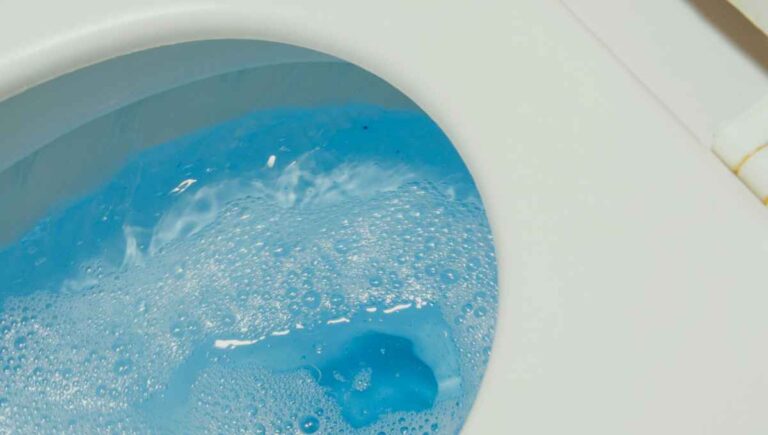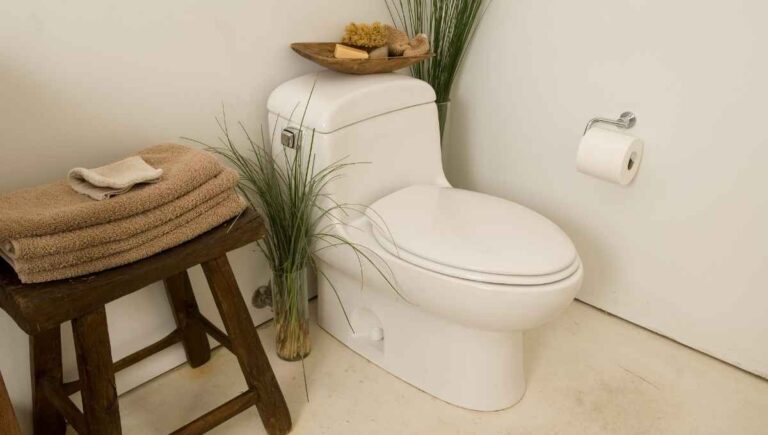Can You Flush Tampons Down the Toilet? (What to Do Instead)
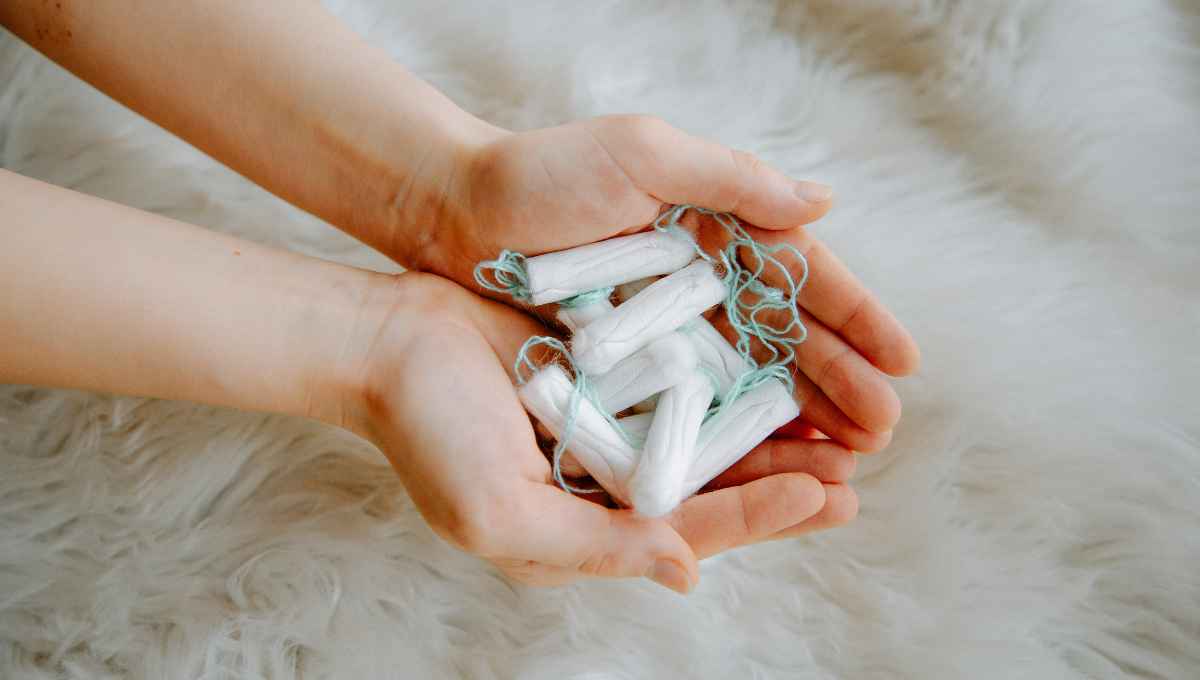
When it comes to menstruation, one of women’s biggest questions is whether or not it is safe to flush tampons down the toilet. Some may argue that it’s convenient and hygienic, while others believe it’s a recipe for plumbing disasters.
Flushing tampons down the toilet is not recommended. Tampons are not biodegradable and can cause clogs in the plumbing system, leading to costly repairs. In addition, tampons can harm the environment by polluting waterways and harming marine life. Instead, tampons should be properly disposed of in the trash or in a designated sanitary bin.
Curious to know more about the potential consequences of flushing tampons down the toilet? Keep reading to learn about this common but harmful practice’s environmental impact, plumbing issues, and potential legal ramifications.
This post contains affiliate links. This means Household Blogger may earn a commission should you make a purchase using any of our links. Please refer to our full affiliate disclosure policy for full details.
Here’s a Quick Pro Tip!
Here are some of our favorite eco-friendly menstrual products available on Amazon:
1. DivaCup Menstrual Cup – A comfortable and easy-to-use menstrual cup.
2. Asenappy Reusable Menstrual Pads – A reusable cloth pad that is gentle on your skin and the planet.
3. Pixie Cup Sterilizing Container – A convenient container for sterilizing your menstrual cup between uses.
Understanding the Problem
This section will delve into the problem of flushing tampons down the toilet. Understanding the issue at hand is crucial in preventing clogs, damage to plumbing systems, and environmental harm. Let’s explore the reasons why flushing tampons down the toilet is a bad idea.
The risks of flushing tampons
Flushing tampons down the toilet may seem like a convenient and easy way to dispose of them, but it can lead to serious plumbing problems. Tampons are not designed to break down quickly, and when flushed, they can easily become lodged in your pipes.
Over time, this can cause a blockage that prevents water from draining properly, leading to backups and overflows. If you have a septic system, flushing tampons can also significantly impact this system. Tampons can clog the system and cause it to fail, leading to costly repairs.
Even if you have a public sewage system, flushing tampons can still cause problems. When tampons are flushed, they can get caught in the pipes and cause blockages, leading to backups and overflows that can damage the environment.
In addition to the plumbing problems, flushing tampons can also pose health risks. Tampons are designed to absorb and hold blood, which can be a breeding ground for bacteria. If tampons are not disposed of properly, they can attract pests and vermin, leading to a risk of disease transmission.
Additionally, flushing tampons can lead to pollution of the environment, as they can end up in rivers and oceans, where they can harm marine life. To avoid these risks, it is essential to dispose of tampons properly.
The safest way to do this is by wrapping them in toilet paper and disposing of them in a trash can. This way, you can prevent plumbing problems, avoid damage to your septic system, and protect your health and the environment.
Why you should not flush tampons
Tampons take a long time to break down, and when they do, they release harmful chemicals into the environment. These chemicals can contaminate water sources, harm marine life, and damage the ecosystem.
In many places, there are legal regulations surrounding tampon disposal. In some areas, it is illegal to flush tampons down the toilet due to the negative impact on the environment. In other areas, there are fines for improper tampon disposal. It is important to check local regulations to ensure that you dispose of tampons correctly.
The cost of tampon-related plumbing repairs can also be significant. When tampons are flushed, they can cause blockages in the plumbing system, leading to backups and overflows. This can result in costly repairs, including hiring a plumber to fix the problem.
It is important to note that tampons take a long time to break down. In fact, it can take years for a tampon to decompose fully. This means that every tampon that is flushed down the toilet adds to the already significant problem of waste in landfills and the environment.
Properly disposing of tampons can help reduce the negative impact on the environment and prevent costly plumbing repairs.
You might also enjoy our post on Whether You Can Flush Food Down The Toilet
The importance of proper tampon disposal
Proper tampon disposal is essential to protect our plumbing systems, the environment, and our health. There are several ways to dispose of tampons properly, and finding a method that works for you is important.
One of the most effective ways to dispose of tampons is to wrap them in toilet paper and dispose of them in a trash can. This method prevents tampons from causing pipe blockages, protecting our plumbing systems from damage.
Additionally, by properly disposing of tampons, we can reduce the amount of waste in landfills and prevent harm to the environment.
Another alternative tampon disposal method is using a menstrual cup or period underwear. Menstrual cups and period underwear are reusable and do not require disposal. These products are also environmentally friendly and can save money in the long run, as they can be used for multiple periods.
Creating a tampon disposal plan that works for you is important. This plan should take into account your lifestyle and needs. For example, if you are on the go, you may want to carry a small bag to dispose of tampons in until you can find a trash can.
If you are at home, you can create a designated bin for tampon disposal in your bathroom.
What Happens When You Flush Tampons Down the Toilet?
If you use tampons during your period, it’s important to dispose of them properly. While some people may be tempted to flush them down the toilet, this can actually lead to serious consequences for your plumbing system and the environment.
In this section, we’ll explore whether you can flush tampons down the toilet and what happens if you do.
How tampons impact your plumbing
Tampons are made of absorbent materials like cotton, rayon, or a blend of both. When these materials are flushed down the toilet, they can cause serious problems for your plumbing system.
One of the biggest issues with flushing tampons is that they can block your pipes. Because tampons are designed to absorb liquids, they can expand significantly in size when they come into contact with water. As a result, they can easily get stuck in the pipes, creating a blockage that prevents water from flowing through.
If you continue flushing tampons down the toilet, the blockage can worsen over time. In extreme cases, this can lead to slow drainage, sewage backups, and even burst pipes. Repairing these types of plumbing problems can be very expensive, so it’s best to avoid flushing tampons altogether.
In addition to the impact on your personal plumbing, flushing tampons down public restrooms can have even more severe consequences. Public restrooms are typically connected to larger sewer systems, which non-flushable items like tampons can easily clog.
When this happens, the sewage can back up into other areas, causing damage to public infrastructure and posing a serious health risk to the public.
In some cases, flushing tampons down public restrooms can even result in fines or legal action. Therefore, it’s crucial to dispose of tampons properly by placing them in the trash or using dedicated disposal bins when available.
The effects of flushing tampons on the environment
The impact of tampon waste on the environment cannot be understated. Tampons contain a combination of synthetic and natural materials, which can take years to decompose. When they are flushed down the toilet, they can end up in waterways, causing significant environmental damage.
Tampons can contribute to water pollution in several ways. Firstly, when tampons are flushed down the toilet, they can end up in water treatment facilities. These facilities are designed to remove harmful chemicals and pollutants from wastewater but not to filter out tampons or other non-flushable items.
As a result, these items can pass through the facility and end up in local rivers, lakes, and oceans. Furthermore, the synthetic materials used in tampons, such as plastic applicators, can also contribute to plastic pollution.
According to the Ocean Conservancy, tampon applicators are one of the most common items found on beaches during cleanup efforts. These plastics can be mistaken for food by marine life, causing injury or death.
Proper tampon disposal is crucial for reducing the environmental impact of tampon waste. While flushing tampons down the toilet may seem convenient, it is not an environmentally friendly option. Instead, tampons should be disposed of in the trash or through eco-friendly options, such as compostable or reusable menstrual products.
Eco-friendly tampon disposal options reduce the amount of waste sent to landfills and help prevent tampon waste from polluting our waterways. For example, compostable tampons can be broken down naturally and used to fertilize gardens, while reusable menstrual products can significantly reduce the amount of waste produced each month.
You might also enjoy our post on Whether You Should Flush a Mouse Down The Toilet
Why flushing tampons can cause expensive plumbing repairs
Flushing tampons down the toilet can cause significant damage to your plumbing system, leading to expensive repairs. Tampons can easily get stuck in your pipes, causing blockages that can lead to backups and overflows. When this happens, raw sewage can overflow into your home, causing extensive damage and posing health risks.
The cost of tampon-related plumbing repairs can vary, depending on the extent of the damage. Minor clogs can often be cleared with a plunger or plumbing snake, but more severe blockages may require professional assistance. In some cases, tampon-related blockages can cause pipes to burst, which can be a costly repair.
Tampons can also damage your plumbing system in other ways. The strings on tampons can get caught on plumbing fixtures, leading to damage or even breakage. The synthetic materials used in tampons can also create a coating on the inside of pipes, leading to corrosion and reduced water flow.
To protect your plumbing system from tampon-related damage, never flush tampons down the toilet. Instead, dispose of them in the trash. If you frequently use tampons, consider installing a mesh screen over your drains to catch any tampons or other non-flushable items that may accidentally make their way down your pipes.
Alternatives to Flushing Tampons Down the Toilet
If you’re menstruating, you’ve probably been told not to flush tampons down the toilet. And for a good reason – flushing tampons can cause major plumbing issues and harm the environment. But what are your options? In this section, we’ll explore alternatives to flushing tampons down the toilet.
Proper tampon disposal methods
Proper tampon disposal is important to avoid plumbing issues and to protect the environment. Flushing tampons down the toilet can cause major plumbing issues like clogs and backups. That is why it is essential to use safe disposal methods.
One of the methods is to use tampon disposal bags. These bags are designed specifically for the disposal of feminine hygiene products. Simply insert the used tampon into the bag, seal it shut, and dispose of it in a trash can. Tampon disposal bags are discreet and easy to use.
Another option is to use a tampon disposal container often found in public restrooms. These containers are designed for safe and sanitary disposal of feminine hygiene products. To use, insert the used tampon into the container and close the lid. Custodial staff usually empties and cleans these containers regularly.
If tampon disposal bags or containers are unavailable, a trash can lined with a plastic bag can be used. Wrap the used tampon in toilet paper or tissue to contain any mess, and then place the wrapped tampon into the plastic-lined trash can. Tie the bag shut tightly to prevent any odors or leaks.
The benefits of using alternative disposal methods
Alternative tampon disposal methods offer several benefits that make them better than flushing tampons down the toilet. One of the most significant advantages is the environmental benefit.
By using these methods, we reduce the amount of waste going into our waterways and landfills, which helps to preserve the environment. Tampon disposal bags, containers, and properly lined trash cans are all great alternatives that can make a difference in reducing the environmental impact of tampon disposal.
Another benefit of alternative tampon disposal methods is improved health and hygiene. Using tampon disposal bags or containers reduces the risk of exposure to bloodborne pathogens that can be present in used tampons.
This can protect both the user and the custodial staff who dispose of the tampons. Additionally, using tampon disposal bags or containers provides a more discreet and hygienic way to dispose of feminine hygiene products.
Finally, alternative tampon disposal methods can also save money in the long run. Flushing tampons down the toilet can cause plumbing issues that can be expensive to repair. Using tampon disposal bags or containers reduces the risk of these plumbing problems and can save money on costly repairs.
How to create a tampon disposal plan that works for you
To create a tampon disposal plan that works for you, there are a few important considerations to keep in mind. The first is choosing the right tampon disposal method, which should be based on your lifestyle, personal preferences, and budget.
Tampon disposal bags and containers are often convenient and budget-friendly options but may not be ideal for frequent travelers or those with limited storage space. Tampon disposal containers offer a more discreet and hygienic way to dispose of tampons, and you should also consider the environmental impact of the disposal method you choose.
Incorporating tampon disposal into your routine is also essential. Make it a habit to dispose of your tampons properly by keeping a small trash can with a lid in your bathroom or using tampon disposal bags or containers that are easy to carry with you. By making it a part of your daily routine, you won’t forget to dispose of your tampons properly and avoid clogging the toilet or creating other issues.
When it comes to traveling, having a plan for tampon disposal is crucial. Bring small, sealable bags or disposable tampon disposal bags that are easy to pack and can be disposed of in a regular trash can.
If you’re staying in a hotel or Airbnb, check if they offer specific tampon disposal methods or bins. Additionally, be aware of local laws and regulations regarding tampon disposal in the countries or cities you visit to avoid legal issues.
Overall, creating a tampon disposal plan involves choosing the right disposal method, incorporating it into your routine, and planning for tampon disposal while traveling. Consider your lifestyle, personal preferences, and budget when choosing a disposal method, and make it a habit to dispose of your tampons properly.
When traveling, bring small, sealable bags or disposable tampon disposal bags, and research local laws and regulations regarding tampon disposal to avoid any legal issues
How to Prevent Plumbing Issues from Tampon Disposal
Tampons are a common feminine hygiene product used by women around the world. However, improper disposal of tampons can cause plumbing issues that are costly to fix. This section will discuss simple and effective ways to prevent plumbing issues from tampon disposal.
Tips for avoiding tampon-related plumbing problems
Tampons are a convenient and discreet option for menstrual management, but flushing them down the toilet can cause serious plumbing problems. Educating yourself and others on proper tampon disposal techniques is essential to avoid these issues. Here are some tips to keep in mind:
- Educate others on proper tampon disposal: Many people may not be aware that tampons should not be flushed down the toilet. It’s important to share this information with others, whether it’s through word of mouth, social media, or educational campaigns. Encourage others to dispose of tampons in the trash, ideally wrapped in toilet paper or placed in a small bag before being thrown away.
- Address common misconceptions: Many myths surrounding tampon disposal can lead to plumbing problems. One common misconception is that flushing tampons is safe because they are small and biodegradable. However, tampons are designed to expand when exposed to moisture, which means they can easily clog pipes and cause backups. It’s important to dispel these myths and emphasize the importance of proper disposal.
- Learn to identify signs of tampon-related plumbing problems: Even if you dispose of tampons properly, plumbing problems can still occur. Some signs of tampon-related plumbing problems include slow-draining sinks or toilets, gurgling sounds coming from pipes, and foul odors. If you notice any of these signs, it’s important to contact a professional plumber to address the issue as soon as possible.
Following these tips can help prevent tampon-related plumbing problems and keep your plumbing system running smoothly. Remember, the most important thing is to always dispose of tampons properly and never flush them down the toilet.
How to protect your plumbing from tampon damage
If you want to avoid tampon-related plumbing problems, there are several steps you can take to protect your plumbing system. One option is to install a tampon-safe toilet designed specifically to handle feminine hygiene products like tampons.
These toilets have larger drain lines and more powerful flushing systems, which can help prevent clogs and backups. However, it’s important to consult with a professional plumber before installing a tampon-safe toilet to ensure that it is the right choice for your plumbing system.
Another way to protect your plumbing system is to use a lint catcher, which is a small mesh screen that fits over the drain in your bathtub or shower. The lint catcher catches small particles like hair and lint but can also catch larger items like tampons and pads.
Be sure to clean the lint catcher regularly to prevent buildup and ensure it continues working effectively.
You can also take several other steps to prevent tampon-related plumbing issues. For example, you can provide a small trash can in your bathroom for tampon disposal or switch to alternative menstrual products like menstrual cups or period underwear.
Educating yourself and others on proper tampon disposal techniques and addressing any misconceptions about flushing tampons is important.
By taking these steps, you can protect your plumbing system from tampon-related damage and avoid costly repairs. Remember, prevention is key when it comes to plumbing problems, so don’t be afraid to take proactive measures to protect your plumbing system.
Best practices for tampon disposal that won’t harm your pipes
When it comes to tampon disposal, it’s important to follow best practices to avoid harming your plumbing system and the environment. The first step is to know what not to flush down the toilet.
All feminine hygiene products, including tampons, pads, and panty liners, should never be flushed down the toilet. Other items like dental floss, cotton swabs, and paper towels should also be disposed of in the trash to prevent clogs and backups in your plumbing system.
To properly dispose of tampons in the trash, wrapping them in toilet paper or tissue before throwing them away is recommended. This helps to prevent odors and keeps the tampons from coming into contact with other trash in the garbage can. If you prefer a more discreet option, you can also purchase special disposal bags designed for tampons.
Several options are available if you’re looking for alternatives to flushing tampons. Menstrual cups are becoming more popular and are reusable, environmentally friendly, and cost-effective. Another option is period underwear, which is designed to absorb menstrual blood and can be washed and reused. These alternatives are more sustainable and won’t harm your plumbing system.
By following these best practices for tampon disposal, you can protect your plumbing system and do your part for the environment. Remember, flushing tampons down the toilet is never a good idea, so educating yourself and others on proper disposal techniques is important.
Clogged Pipes from Flushing Tampons: What to Do
Clogged pipes from flushing tampons down the toilet can be a frustrating and messy problem to deal with. If you’ve experienced this issue or are looking for ways to prevent it, this section is for you. Here, we’ll explore what to do when faced with clogged pipes from flushing tampons and offer tips on preventing it from happening in the future.
How to tell if your pipes are clogged
One of the biggest concerns when it comes to flushing tampons down the toilet is the risk of clogged pipes. While tampons may seem small and harmless, they can quickly accumulate and cause significant plumbing problems. Here are some signs that your pipes may be clogged:
- Slow draining: If you notice that water is taking longer than usual to drain from your sink, shower, or toilet, this could be a sign of a clogged pipe. This is especially true if the slow draining is consistent and not just a one-time occurrence.
- Backups: Backups can happen when there’s a blockage in your pipes that prevents water and waste from flowing properly. You may notice backups in your toilet, sink, or shower, and they can be accompanied by gurgling or bubbling noises.
- Foul odors: A clogged pipe can lead to unpleasant odors emanating from your drains. These smells can be particularly strong in your bathroom or kitchen.
If you’re experiencing any of these issues, it’s important to take action before the problem gets worse. Here are some troubleshooting tips to try:
- Plunge the affected drain: If the issue is confined to a single drain, such as your toilet or sink, try using a plunger to dislodge the blockage. Be sure to use a plunger that’s appropriate for the drain in question, and make sure you’re using it correctly.
- Use a drain snake: If plunging doesn’t work, you may need to use a drain snake to remove the blockage. A drain snake is a long, flexible tool that can be inserted into your pipes to break up and remove clogs.
- Call a plumber: If you’re unable to resolve the issue on your own, or if you’re experiencing more severe plumbing problems, it’s important to call a professional plumber. A plumber can diagnose the problem and recommend the best course of action to get your pipes flowing smoothly again.
Remember, prevention is key when it comes to avoiding clogged pipes. Always dispose of tampons, and other non-degradable items, in the trash to avoid costly and unpleasant plumbing problems.
DIY methods for unclogging pipes due to tampons
In this section, we will discuss three DIY methods for unclogging pipes due to tampons. These methods include using a plunger, a plumbing snake, and DIY drain cleaning solutions.
How to use a plunger to unclog your pipes
A plunger is an effective tool for unclogging pipes. Here’s how to use it to unclog your pipes due to tampons:
- First, ensure that there is enough water in the toilet bowl to cover the head of the plunger.
- Place the plunger over the toilet drain and press down gently until you feel a slight suction.
- Move the plunger up and down vigorously for several seconds. You should repeat this process a few times until the clog is cleared.
Note: if the plunger method does not work, try using a plumbing snake.
Using a plumbing snake to remove tampon clogs
A plumbing snake is a flexible auger used to remove clogs in pipes. Here’s how to use it to remove tampon clogs:
- Insert the plumbing snake into the toilet drain.
- Turn the handle clockwise while pushing the snake further into the drain until you feel resistance.
- Rotate the snake and push it in further until you feel it break through the clog.
- Once you’ve broken through the clog, pull the snake back out of the drain while continuing to rotate it. This will help to pull the tampon out of the drain.
Note: If neither the plunger nor the plumbing snake works, it might be time to call a professional plumber.
DIY drain cleaning solutions
There are several DIY drain cleaning solutions that you can use to remove tampon clogs from your pipes. Here are a few examples:
- Baking soda and vinegar: Mix equal parts baking soda and vinegar and pour the mixture down the drain. Wait for a few minutes, and then flush the drain with hot water.
- Boiling water: Boil a pot of water and pour it down the drain. Repeat this process a few times until the clog is cleared.
- Salt and baking soda: Mix equal parts salt and baking soda and pour the mixture down the drain. Let it sit for a few minutes, and then flush the drain with hot water.
Note: Always be careful when using DIY drain cleaning solutions, as some can be harsh and damage your pipes.
When to call a professional plumber
If DIY methods, such as using a plunger, plumbing snake, or DIY drain cleaning solutions, do not work, it may be necessary to call a professional plumber to unclog pipes due to tampons. Using a clogged toilet can cause more significant problems, such as overflowing or bursting pipes. Additionally, chemical drain cleaners can damage pipes and make the problem worse.
When choosing a plumber, choosing someone reputable and trustworthy is essential. Recommendations from friends, family, or colleagues can help, as can looking for plumbers with good reviews online.
Checking a plumber’s license and insurance, getting a written estimate before work begins, and asking for a warranty or guarantee for the work done can also help ensure a reputable and trustworthy plumber is chosen.
The cost of hiring a plumber can vary depending on the severity of the clog and the location. Plumbers typically charge an hourly rate plus the cost of materials, with some also charging a flat rate for specific services. The average cost to unclog a toilet due to tampons can range from $100 to $250, with higher costs for more extensive damage to pipes.
It’s important to ask for a written estimate before work begins to avoid any surprise costs. Additionally, if you have homeowner’s insurance, check if the policy covers plumbing repairs.
Final Thoughts
In conclusion, flushing tampons down the toilet is not recommended. Tampons can cause serious damage to your plumbing system, and can also harm the environment. It is important to dispose of tampons properly by wrapping them in toilet paper or placing them in a waste bin.
If you are unsure about how to dispose of tampons, contact your local waste management department for guidance. By taking the time to dispose of tampons properly, you can help protect your plumbing system and the environment for generations to come. Remember, “only flush the 3Ps – pee, poo, and paper.”




